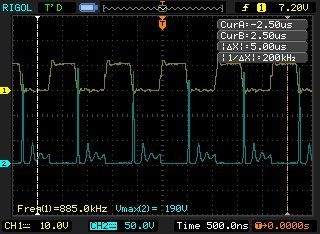Originally posted by African
View Post
I have a question for you as I am presently working on a driver circuit to power my hand wound air gap coils as a hand made lower voltage DIY NST setup. and I was simply changeing a 12v DC to 120v AC inverter schematic to a variable frequency 50% duty cycle arrangement. (the schematic is attached in the thumbnail if anyone is interested.) My question is how did you change the duty cycle of the 555 in your circuit to 85% as that interests me greatly. your information will be appreciated truly sir! thanks in advance, mike,onward!
BTW - I am changeing the R4 pot to an 1M 3watt potentiometer to vary my frequency to achieve reasonance of my hand wound air gap coils. Also the T1 transformer will be replaced by my hand wound coils. all of this should give me a nice lower voltage NST power supply to drive an L1 smith type coil. I am like you in having tried different type NST,s in the past. but hopefuly with this setup I will have cured that LOL!!! also the transistors I am useing are the old standbys a 2N3055 NPN and a MJ2955 PNP.


 or the 2000v 40uf? hehe
or the 2000v 40uf? hehe

 i havent tried it yet with my smith board, but the radiant circuit i was playing with a while back in fact went 3 or 4 days on the battery from 12.04v or so to 12.31v with the cfl's going, i actually turned it off cause the battery was charged LOL
i havent tried it yet with my smith board, but the radiant circuit i was playing with a while back in fact went 3 or 4 days on the battery from 12.04v or so to 12.31v with the cfl's going, i actually turned it off cause the battery was charged LOL Maybe you should try to get bigger once.
Maybe you should try to get bigger once.


Comment